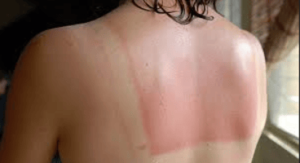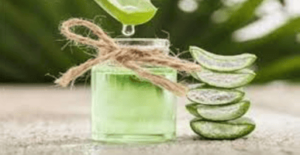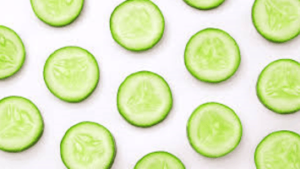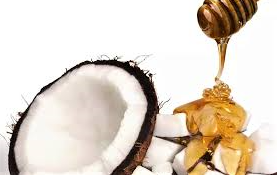Has the summer sun left your skin red, painful, and inflamed? Discovering how to treat sunburn naturally can be a game-changer for your recovery and comfort. Sunburns happen when our skin is exposed to excessive ultraviolet radiation, causing inflammation, pain, and potential long-term damage.
Before reaching for chemical-laden commercial products, consider that your kitchen and garden might hold effective, gentle remedies that have been used for generations. From cooling compresses to herbal treatments, these natural approaches can significantly reduce discomfort and healing time while avoiding harsh chemicals that might further irritate sensitive, damaged skin.
Let’s dive into these natural sunburn treatments that harness the power of ingredients you likely already have at home, providing effective relief when you need it most.

Understanding Sunburn: What Happens to Your Skin
It’s helpful to understand what’s actually happening to your skin when it burns. Sunburn is your skin’s inflammatory response to excessive UV radiation exposure. When ultraviolet rays penetrate your skin, they damage cell DNA, triggering an immune response.
Your body increases blood flow to the affected areas, causing redness, warmth, and inflammation – the hallmark signs of sunburn. The severity of sunburn depends on:
- Your skin type and melanin content
- Duration of sun exposure
- Time of day when exposure occurred
- Geographical location and altitude
- Weather conditions
Noticeable symptoms usually starts 4–6 hours after exposure and peak 12–24 hours later. These may include:
- Skin redness and warmth
- Pain and tenderness
- Swelling
- Blistering in severe cases
- Headache, fever, or chills in extreme cases
Understanding that sunburn is actual skin damage helps emphasize why gentle, natural remedies are ideal for treatment. Harsh chemicals can further irritate already damaged skin, whereas natural treatments can soothe while supporting the healing process.
First Steps for Natural Sunburn Treatment
When you first notice sunburn developing, taking immediate action can significantly reduce its severity and duration. Here are the crucial first steps in how to treat sunburn naturally:
Get out of the sun immediately
Further exposure will only worsen the damage. Seek shade or go indoors.
Take a cool shower or bath
Keep the water temperature comfortable but cool. Avoid using soaps, which can dry and irritate sunburned skin further. Let the skin air dry or use a soft towel to gently dry your skin.
Apply cool compresses
Soak a clean cloth in cool water mixed with a cup of whole milk or green tea. The proteins in milk and the antioxidants in green tea provide immediate relief while beginning the healing process.
Hydrate aggressively
Fluid is drawn to the skin’s surface by sunburn and away from the body’s other tissues. Drink plenty of water, herbal teas, and electrolyte beverages to rehydrate from within.
Take an anti-inflammatory.
While focusing on how to treat sunburn naturally, sometimes an over-the-counter anti-inflammatory like ibuprofen may be necessary to reduce severe pain and inflammation during the first 24 hours. These immediate steps create the foundation for more specific natural treatments that will accelerate healing and provide comfort during recovery.
Proven Natural Sunburn Remedies
Many of these remedies have scientific support for their cooling, anti-inflammatory, and healing properties.
Aloe Vera: Nature’s Sunburn Specialist
Aloe vera stands as perhaps the most renowned natural treatment for sunburn. This succulent plant contains over 75 potentially active compounds, including vitamins, enzymes, minerals, sugars, and acids with documented healing properties.

Benefits of aloe vera for sunburn:
- Redness and swelling are reduced by its anti-inflammatory qualities.
- Provides cooling sensation that alleviates pain
- Creates protective layer that retains moisture
- Accelerates skin cell regeneration
- Has antioxidants that fight free radicals
Direct application of pure aloe vera gel yields the finest results from a plant by slicing open a thick leaf and applying the clear gel to affected areas. Look for aloe vera gel that has at least 95% pure aloe vera and little additives if using commercial aloe vera.
Apply generously several times daily until your sunburn heals completely. Store in the refrigerator between applications for enhanced cooling relief.
Cooling Cucumber Treatment
Cucumber offers excellent relief for sunburned skin through its cooling properties and high water content.

How cucumber helps treat sunburn naturally:
- High water content hydrates and cools the skin
- Contains vitamin C and caffeic acid that help soothe irritation
- Anti-inflammatory properties reduce redness and swelling
- Gentle enough for sensitive areas like face and neck
Create a cucumber treatment by blending a cold cucumber into a paste and applying it directly to affected areas. As an alternative, apply slices of cucumber straight on the sunburn to treat it. Rinse with cool water after 15 to 20 minutes of leaving it on.
Oatmeal Bath for Full-Body Relief
When sunburn covers large areas of your body, an oatmeal bath provides widespread relief through its anti-inflammatory and skin-protective properties.
 Benefits of oatmeal for sunburn:
Benefits of oatmeal for sunburn:
- Contains avenanthramides, potent anti-inflammatory compounds
- Produces a protective and soothing film to cover the skin.
- Helps maintain skin’s moisture barrier
- Reduces itching during the healing phase
- Normalizes skin pH
Prepare an oatmeal bath by grinding 1 cup of unflavored, plain oatmeal (colloidal oatmeal works best) in a food processor until it has a fine, powder-like consistency. Add to cool bathwater while stirring to distribute evenly.
After soaking for 15 to 20 minutes, gently pat the skin dry.
Honey: Ancient Healer for Modern Burns
Raw honey has been used for thousands of years to treat burns and wounds, and modern research confirms its effectiveness.
How honey helps with sunburn:
- Contains hydrogen peroxide that provides gentle antiseptic properties
- Creates protective barrier that retains moisture
- Reduces inflammation and promotes healing
- May help prevent infection in blistered sunburns
- Packed in antioxidants to prevent damage from free radicals
Apply a small layer of raw, fresh honey directly to clean skin to treat a localized sunburn. Cover with gauze if necessary to prevent stickiness on clothing. Rinse gently with cool water after 20-30 minutes. Repeat 2-3 times daily.
Coconut Oil: After the Initial Burn Subsides
While coconut oil shouldn’t be applied during the initial inflammatory phase (first 24-48 hours), it becomes an excellent natural treatment once the immediate heat and pain have subsided.

Benefits of coconut oil for healing sunburn:
- Rich in fatty acids that replenish the skin’s moisture barrier
- Contains vitamin E that supports skin repair
- Offers antimicrobial properties to prevent infection
- Reduces persistent inflammation
- Minimizes peeling and flaking during recovery
Apply virgin coconut oil gently to sunburned areas after the initial heat has dissipated, typically 48 hours after sun exposure. Apply a tiny quantity and let it absorb fully. Reapply 2-3 times daily to support healing and prevent excessive peeling.
Beneficial essential oils for sunburn treatment:
- Lavender oil: Reduces inflammation and aids skin regeneration
- Peppermint oil: Provides cooling sensation and pain relief
- Chamomile oil: Calms irritation and inflammation
- Tea tree oil: Offers antimicrobial protection
- Helichrysum oil: Promotes new cell growth and reduces scarring
Safe dilution ratio: 5-6 drops of essential oil per ounce of carrier oil (such as jojoba, sweet almond, or fractionated coconut oil). Apply sparingly to affected areas 2-3 times daily after the initial burn phase has passed.
Hydration and Nutrition
Knowing how to treat sunburn naturally extends beyond topical applications. Your internal environment plays a crucial role in your skin’s healing process.
Hydration: The Foundation of Skin Repair
Sunburn dehydrates your entire body, not just your skin. Proper hydration accelerates healing and reduces discomfort.
Hydration strategies for sunburn recovery:
- Drink at least 8-10 large glasses of water daily
- Consume electrolyte-rich beverages like coconut water
- Enjoy hydrating fruits and vegetables (watermelon, cucumber, celery)
- Limit diuretics like caffeine and alcohol
- Keep an eye on the color of your urine; pale yellow means adequate hydration.
Anti-Inflammatory Foods to Speed Healing
Your diet can significantly impact how quickly your sunburn heals by reducing inflammation from within. Foods that help treat sunburn through anti-inflammatory action:
- Omega-3-rich fatty fish like salmon and mackerel
- Colorful berries containing antioxidants (blueberries, strawberries)
- Leafy greens with vitamins E and C (spinach, kale)
- Tomatoes with lycopene that provides photoprotection
- Nuts and seeds containing zinc and vitamin E
- Green tea with catechins that reduce inflammation
Supplements That Support Skin Repair
While focusing on whole foods is preferable, certain supplements may enhance your body’s natural healing response to sunburn.
Beneficial supplements for sunburn recovery:
- Vitamin E: Supports skin repair and reduces inflammation
- Astaxanthin: Powerful antioxidant with photo-protective properties
- Vitamin D: Helps skin cell regeneration (ironically often low in sunburn sufferers)
- Omega-3 fatty acids: Reduce inflammation throughout the body
- Zinc: Essential for wound healing and skin integrity
Before starting any supplement program, especially if you take medication, always get advice from your healthcare professional.
When to Seek Medical Attention for Sunburn
While learning how to treat sunburn naturally is valuable, certain situations require professional medical intervention. Be vigilant for these warning signs:
Seek immediate medical attention if you experience:
- Severe blistering covering a large portion of your body
- Facial swelling or swelling of extremities
- Signs of infection (increasing pain, yellow discharge, red streaks)
- Fever over 101°F (38.3°C)
- Confusion, dizziness, or severe headache
- Extreme thirst, reduced urination, or dark urine
- Chills or feeling faint
- Indications of heat stroke or tiredness
These symptoms may indicate severe sunburn requiring medical treatment beyond natural remedies. If you are uncertain about the severity of your ailment, don’t be afraid to get in touch with a healthcare professional.
Prevention As The Best Natural Sunburn Treatment
While knowing how to treat sunburn naturally is important, prevention remains far superior to any treatment. Incorporate these natural preventive measures into your sun protection routine:
Natural sun protection strategies:
- Steer clear of the sun between 10 AM to 4 PM, when the sun is at its strongest.
- Put on UV-blocking sunglasses, wide-brimmed hats, and protective apparel.
- Seek shade regularly during outdoor activities
- Consider UPF-rated clothing for maximum protection
- Stay hydrated while in the sun
- Consume foods rich in antioxidants that provide internal photoprotection
Natural sunscreen options:
- Mineral-based sunscreens containing zinc oxide or titanium dioxide
- Carrot or red raspberry seed oil containing sunscreens
- Sunscreens with green tea extract for added antioxidant protection
Remember that natural sunscreens may need more frequent reapplication than synthetic varieties. Follow product instructions carefully and reapply after swimming or sweating.
Long-term Skin Recovery After Sunburn
After the immediate pain and redness of sunburn subsides, your skin still requires care to fully recover and minimize long-term damage.
Post-sunburn skin care recommendations:
- Continue gentle moisturizing with natural products
- Avoid harsh exfoliation until skin is completely healed
- Protect newly healed skin from sun exposure
- Use antioxidant-rich serums to combat residual free radical damage
- Consider products with niacinamide to address hyperpigmentation
- Stay vigilant about sun protection to prevent further damage
Full skin recovery from significant sunburn can take weeks to months at the cellular level.
FAQs
Can apple cider vinegar help treat sunburn?
Despite popular belief, apple cider vinegar is not recommended for sunburn treatment. Its acidic nature can further damage and irritate already compromised skin. The acetic acid in vinegar can disrupt your skin’s natural pH balance and potentially worsen inflammation.
When using natural remedies, how long does it take for a sunburn to heal?
With proper natural treatment, mild to moderate sunburns typically begin showing improvement within 3-5 days. The initial redness and pain should diminish within 48-72 hours if you’re consistent with natural treatments like aloe vera, cool compresses, and proper hydration.
Complete healing may take 7-10 days, with peeling occurring around days 3-7. Severe sunburns may take 2 weeks or longer to heal fully.
Is using essential oils on sunburned skin safe?
Applying essential oils to burnt skin within the first 24 to 48 hours of inflammation is not advised. After this period, properly diluted essential oils can be beneficial. Make sure to use a carrier oil, starting with extremely low quantities (5–6 drops per ounce of carrier oil)
Lavender, chamomile, and helichrysum oils are among the safest choices. Avoid citrus oils, which can increase photosensitivity. If in doubt about how to treat sunburn naturally with essential oils, consult a certified aromatherapist.
Can natural remedies prevent peeling after sunburn?
While peeling is part of the natural healing process and cannot be completely prevented, natural remedies can minimize excessive peeling by keeping skin hydrated and supporting cellular repair. Regular application of aloe vera, drinking ample water, and using gentle moisturizers like coconut oil after the initial burn phase can reduce the amount and severity of peeling.
Avoid picking or peeling loose skin, which can lead to scarring.
What’s the best way to sleep with a painful sunburn?
A sunburn person can sleep comfortably in a room prepared by keeping it cool (around 65-68°F/18-20°C). Use a cool mist humidifier to prevent further skin dehydration. Half an hour before going to bed, apply aloe vera gel and let it absorb. Choose loose-fitting, soft cotton clothing or sleepwear.
Use lightweight, breathable cotton sheets rather than synthetic fabrics. If possible, sleep in a position that keeps sunburned areas exposed to air rather than pressed against bedding. A silk or satin pillowcase creates less friction against sunburned skin.
Conclusion…
Knowing how to treat sunburn naturally empowers you to care for your skin with gentle, effective remedies that support your body’s healing process. From the immediate cooling relief of aloe vera to the long-term repair benefits of proper nutrition and hydration, nature provides a comprehensive toolkit for sunburn recovery.
Remember that these natural approaches work best when implemented promptly after sun exposure and continued consistently throughout the healing process. While they can significantly reduce pain and healing time, prevention remains your best strategy against the harmful effects of excessive UV exposure.
Stay sun-smart, but rest assured that nature provides effective solutions when prevention falls short. With these natural approaches to treating sunburn, you can help your largest organ—your skin—recover its health and vitality more quickly and comfortably.



